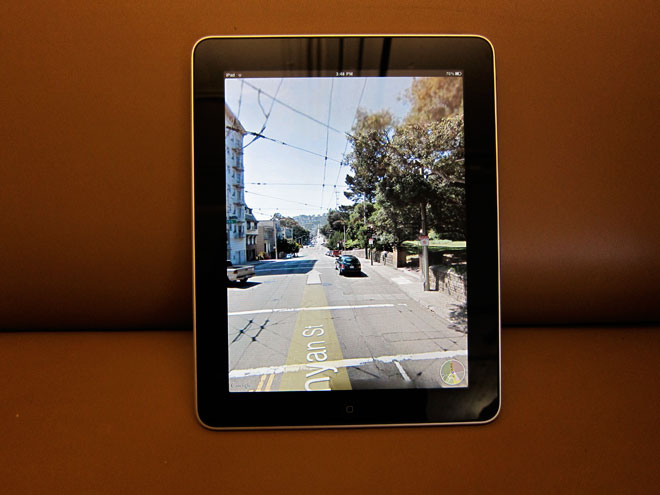
The iPad has touched a nerve in the geek community.
Judging by comments on Wired.com and elsewhere, many people are outraged that Apple would try to foist a less-capable, dumbed-down device on an unsuspecting public. Thanks to clever marketing, these people point out, Apple has persuaded us to spend $500 and more for something that’s less capable and more restrictive than a netbook computer costing half as much.
Those critics are right. But their rage is misplaced.
The iPad is the ultimate media consumption device: It’s just a screen. It is a more beautiful and immersive screen than photos suggest, though. You really do have to hold one in your hand to appreciate how tangible it makes the digital world. Thanks to the in-plane switching LCD and the fast processor under the hood, photos, videos and web pages all come to life, in rich, vivid colors and with a presence that I’ve never seen on any laptop.
Apart from that, there isn’t that much that’s innovative about the iPad, technologically speaking. The rest of Apple’s innovations have to do with packaging, marketing, and a retail experience that’s almost frightening in its attention to detail.
But then, good customer experience, clever marketing, and a fast, bright screen that you can take with you may be just what Hollywood needs.
Because that’s who the iPad is made for: Hollywood. And Madison Avenue, Nashville, Fleet Street, Burbank and all the other places where mass media is produced. (Why do you think Stephen Colbert was one of the first to get an iPad? And why do you think the iPad ad debuted during the Oscars?)
In short, it’s a consumption device, not a production device. Sure, you can make short comments using the on-screen keyboard, but if this were your only device for writing and publishing blog posts, you’d want to fling it out a window.
In other words, the iPad is not ideal for the kind of interactive, distributed storytelling that the web has spawned: in a word, blogging. It’s not likely to do well as a photo or video editing tool or programming device either, though I haven’t tested that hypothesis.
The very thing that makes the iPad so good as a lean-back media device — its lack of a keyboard — is exactly the thing that makes it poorly suited to banging out thoughtful essays, outraged screeds or pointed corrections.
But you know what? That might be OK.
The iPad’s not taking away my keyboard, after all; it’s just another device. Sometimes the kind of passive entertainment it affords is exactly what I want after a long day at my keyboard. While its onscreen keyboard is no great shakes, I can type out a comment or a tweet on it if I feel the need to, and I can always walk over to my laptop if I decide I need to compose a full blog post to rebut some idiot.
As an entertainment device, it’s the next best thing to television. Actually, it’s kind of like television 2.0.
After a day with the iPad, I kind of like that. It’s no more, and no less, than Apple promised. For what it is, it’s a brilliant device: fun, dopamine-releasing, immersive, and easy on the eyes.
If I were to choose between a television and an iPad, I’m pretty sure I’d pick the iPad.
Thanks to by Brian X. Chen for the photo above, and some help sorting out my thoughts in this piece.
Check out this video, where I give a 3-minute first look at the iPad’s high and low points:
